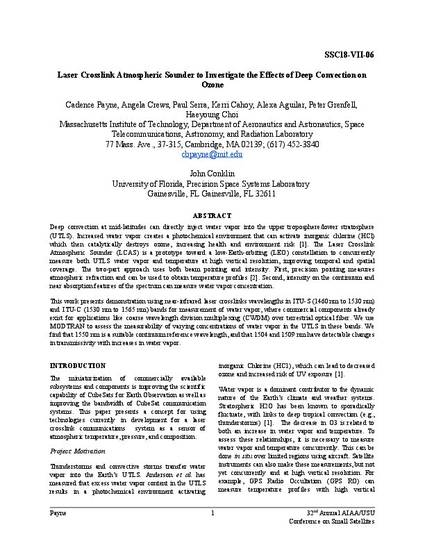
Deep convection at mid-latitudes can directly inject water vapor into the upper troposphere/lower stratosphere (UTLS). Increased water vapor creates a photochemical environment that can activate inorganic chlorine (HCl) which then catalytically destroys ozone, increasing health and environment risk [1]. The Laser Crosslink Atmospheric Sounder (LCAS) is a prototype toward a low-Earth-orbiting (LEO) constellation to concurrently measure both UTLS water vapor and temperature at high vertical resolution, improving temporal and spatial coverage. The two-part approach uses both beam pointing and intensity. First, precision pointing measures atmospheric refraction and can be used to obtain temperature profiles [2]. Second, intensity on the continuum and near absorption features of the spectrum can measure water vapor concentration. This work presents demonstration using near-infrared laser crosslinks wavelengths in ITU-S (1460 nm to 1530 nm) and ITU-C (1530 nm to 1565 nm) bands for measurement of water vapor, where commercial components already exist for applications like coarse wavelength division multiplexing (CWDM) over terrestrial optical fiber. We use MODTRAN to assess the measurability of varying concentrations of water vapor in the UTLS in these bands. We find that 1550 nm is a suitable continuum reference wavelength, and that 1504 and 1509 nm have detectable changes in transmissivity with increases in water vapor.
Available at: http://works.bepress.com/angela_crews/26/
